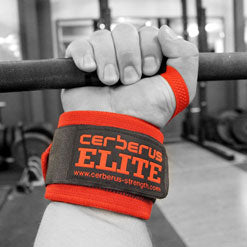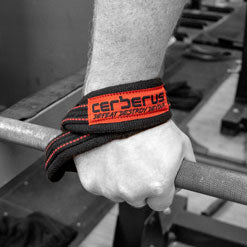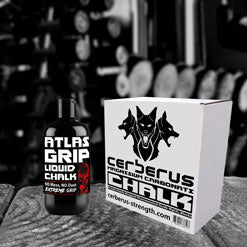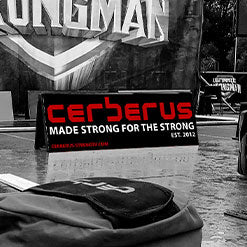
There's not much better than breaking a PR in the deadlift... it's a thrilling accomplishment that signifies not only physical strength but also discipline, technique, and dedication for your craft. At CERBERUS Strength USA, we understand the pursuit of excellence and the drive to push past your limits. To help you on your journey, we've compiled a comprehensive guide to deadlift progressions designed to optimize your performance and ensure steady gains.
The Importance of Progressions in Deadlifting
Deadlift progressions are crucial for several reasons:
- Building a Strong Foundation: Gradually increasing the intensity and complexity of your deadlift routine helps to build a solid strength base, which is essential for lifting heavier weights.
- Improving Technique: Progressions allow you to focus on refining your form and technique, reducing the risk of injury and improving overall efficiency.
- Avoiding Plateaus: Structured progressions keep your muscles challenged, preventing adaptation and helping you break through strength plateaus.
Deadlift Progressions to Break PRs
Here’s a step-by-step guide to effective deadlift progressions that will help you achieve new PRs:
-
Master the Basics
- Form and Technique: Ensure your deadlift form is impeccable. Focus on key points such as maintaining a neutral spine, engaging your core, and using your legs to drive the lift.
- Mobility and Flexibility: Work on your hip, hamstring, and ankle mobility to improve your deadlift setup and execution.
-
Begin with Conventional Deadlifts
- Light to Moderate Loads: Start with lighter weights to perfect your form. Gradually increase the load as you become more comfortable and confident with the movement.
- Rep Schemes: Begin with higher rep ranges (8-12 reps) to build endurance and foundational strength.
-
Incorporate Variations
- Sumo Deadlifts: This variation emphasizes the quads and glutes and can help target different muscle groups, providing a well-rounded strength base.
- Romanian Deadlifts (RDLs): Focuses on the posterior chain, particularly the hamstrings and glutes. RDLs are excellent for improving hamstring strength and hip hinge mechanics.
- Deficit Deadlifts: Standing on a platform increases the range of motion, enhancing strength off the floor.
-
Progress to Heavy Loads
- Lower Rep Ranges: As you build strength, transition to lower rep ranges (3-6 reps) with heavier weights to stimulate maximal strength gains.
- Incremental Increases: Follow a structured program that gradually increases the weight. Aim for small, consistent progressions to avoid overtraining and injury.
-
Implement Advanced Techniques
- Cluster Sets: Break down your sets into smaller clusters with short rest periods. For example, instead of doing 5 reps straight, perform 2 reps, rest 15 seconds, then do another 2 reps.
- Pause Deadlifts: Pause at various points during the lift (just below the knees, for example) to build strength and control in those positions.
- Speed Deadlifts: Use lighter weights and focus on lifting with maximum speed and explosiveness to improve power and acceleration.
-
Periodize Your Training
- Cycle Intensity and Volume: Use periodization to cycle through phases of high volume and high intensity. This helps manage fatigue and ensures continuous progress.
- Deload Weeks: Incorporate regular deload weeks to allow your body to recover and adapt, preventing burnout and overtraining.
-
Supplemental Exercises
- Accessory Work: Strengthen supporting muscles with exercises like bent-over rows, hip thrusts, and leg curls.
- Core Strength: A strong core is essential for a strong deadlift. Incorporate exercises like planks, hanging leg raises, and Russian twists.
-
Focus on Recovery
- Rest and Nutrition: Ensure adequate rest and proper nutrition to support your training. Prioritize protein intake for muscle repair and growth.
- Mobility Work: Regularly include stretching, foam rolling, and mobility drills in your routine to maintain flexibility and prevent injuries.
Breaking your deadlift PRs requires a strategic approach that combines technique, progression, and recovery. By following these structured deadlift progressions, you’ll not only enhance your strength but also minimize the risk of injury and ensure sustainable gains. Stay disciplined, stay focused, and keep lifting strong. Your next PR is within reach!















































